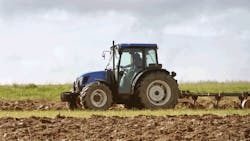Each year, farmers in Ohio and across the nation face serious injury and even death due to the hazards involved with grain storage and handling operations. At least 26 workers on U.S. farms were killed in grain engulfments in 2010; the highest number on record.
Three farm workers have been killed in grain-bin-related accidents this year in Ohio, most recently a Butler County man who suffocated in a grain silo.
“Workers perform dangerous job duties every day here in Ohio, and farming can be among the most dangerous,” said Steve Buehrer, administrator/CEO of the Ohio Bureau of Workers’ Compensation (BWC). “The nature of the business requires extra vigilance and attention to potential dangers and never overlooking preventative measures like using proper safety equipment. BWC is stepping up efforts statewide to improve workplace safety, and offers a number of tools and training that can help keep workers safe both on and off the farm.”
Entering a grain bin is extremely dangerous. The leading cause of fatalities involves entering the bin, becoming engulfed in the grain and suffocating. There are other hazards as well, including exposure to hazardous atmospheres, falls and getting caught in moving equipment.
To reduce risks, workers should not enter a grain bin unless absolutely necessary. In the event that a worker must enter a bin, these simple measures can save lives:
- Turn-off, disconnect or block off all mechanical, electric and hydraulic equipment particularly grain moving equipment. Grain should not be moved while a worker is inside the bin as a suction can be created that can engulf the worker in seconds.
- Do not “walk down” grain to make it flow. Grain movement especially is dangerous and greatly increases the risk of being engulfed in grain.
- Train all workers of the specific hazards of working inside grain bins.
- Provide rescue equipment such as winch systems that specifically are designed for bin rescue.
- Station a spotter or observer who is equipped and trained to perform rescue operations.
- Test the air inside the bin for oxygen content and the presence of any hazardous gases prior to entry.
BWC offers resources regarding these practices and others to aid in the prevention of injuries, illness and fatalities associated with grain storage and handling operations:
- On-site consultative services to provide personal assistance with safety consultation and training related to all types of grain bin hazards.
- A video library that loans videos on hazard recognition and injury prevention at no charge.
- A new fact sheet and resource page.
- A full range of BWC’s safety services.
About the Author

Sandy Smith
Sandy Smith is the former content director of EHS Today, and is currently the EHSQ content & community lead at Intelex Technologies Inc. She has written about occupational safety and health and environmental issues since 1990.
